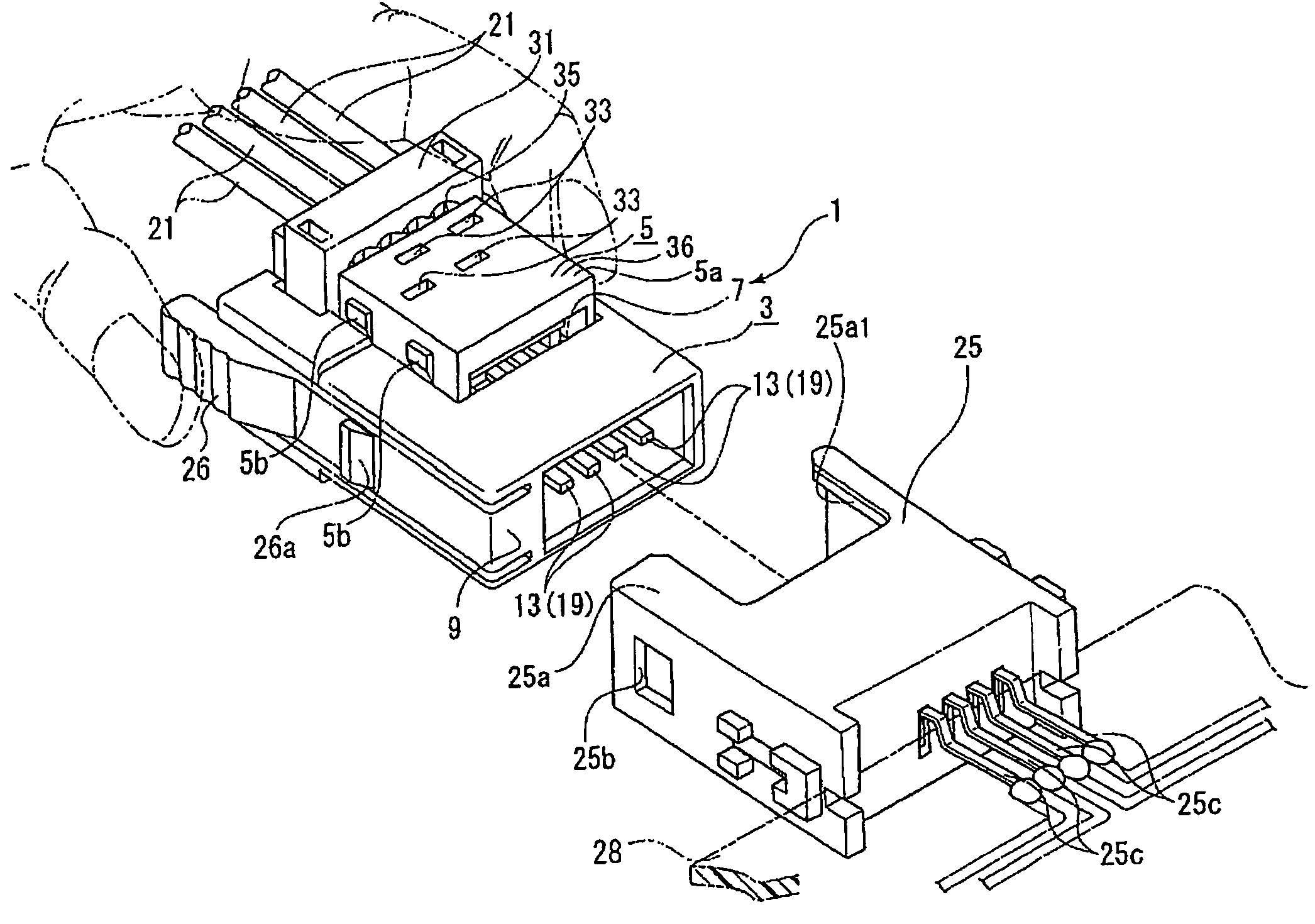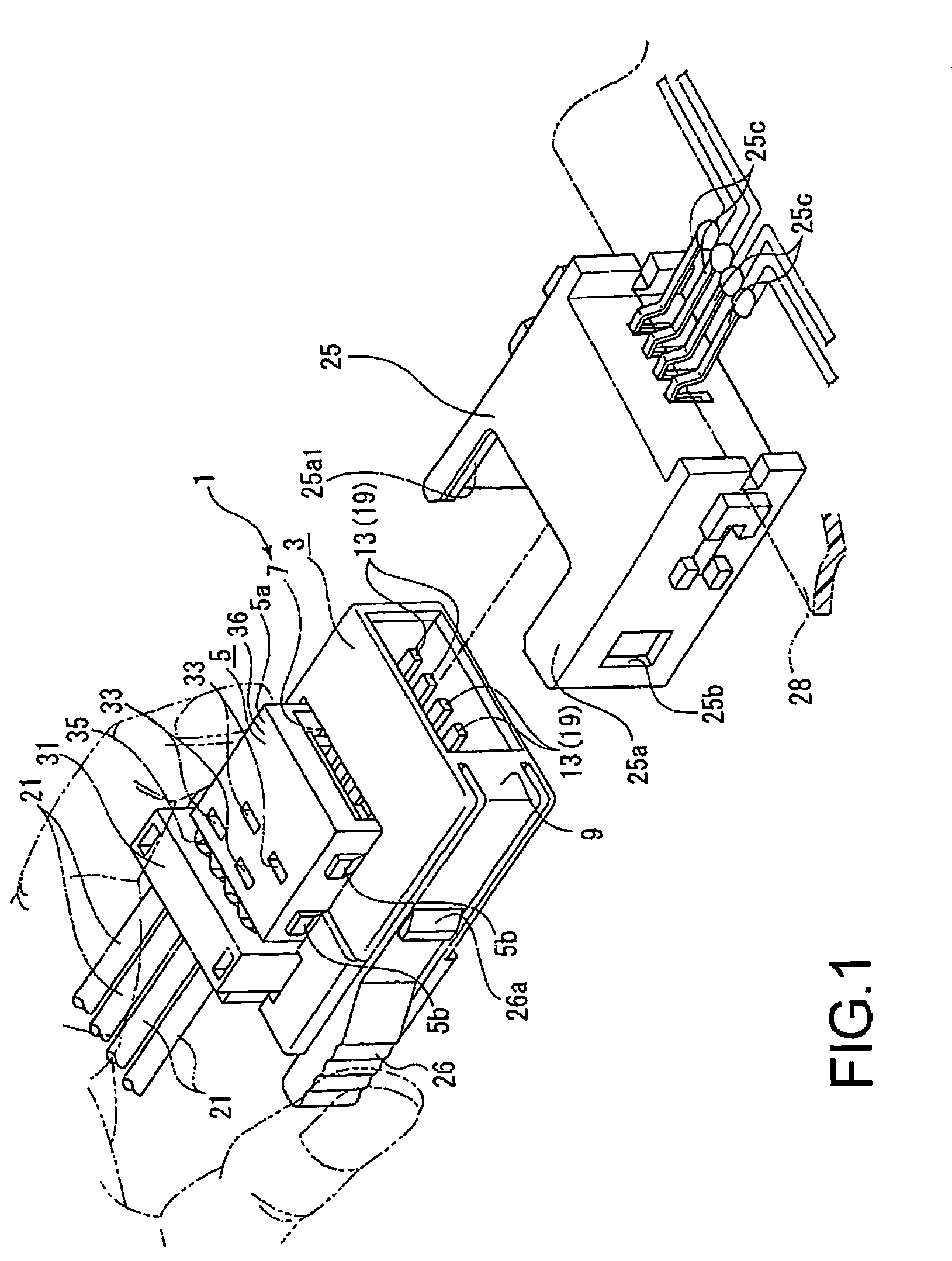Insulation displacement connector
a technology of displacement connector and insulation, applied in the direction of contact members penetrating/cutting insulation/cable strands, coupling device connections, electrical apparatus, etc., can solve the problems of reducing durability, stress concentration, and reducing durability, so as to prevent excessive strain and prevent a change in the contact resistance value or a degradation of the conductor
- Summary
- Abstract
- Description
- Claims
- Application Information
AI Technical Summary
Benefits of technology
Problems solved by technology
Method used
Image
Examples
Embodiment Construction
[0044]A description will be given of an IDT connector 1 according to a first embodiment of the invention with reference to FIGS. 1–20. The IDT connector 1 is a so-called plug connector, which is composed of a base housing 3 and a cover housing 5 to be overlaid on the base housing 3.
[0045]The base housing 3 includes: a terminal chamber 7 surrounded by the cover housing 5 and in which a plurality of terminals 13 are fixed; a mating section 9 which is inserted into a receptacle connector 25 serving as a mating connector of the IDT connector 1; and a partition wall 11 located between the terminal chamber 7 and the mating section 9 (see FIG. 10).
[0046]The terminal chamber 7 defines a bed in which plural (four in this embodiment) terminals 13 serving as IDT terminals are fixed onto a bottom surface 15 thereof (see FIGS. 10, 14 etc.).
[0047]Each terminal 13 is stamped and formed from sheet metal of phosphorus bronze. As can be seen in FIG. 10, in its side view, the terminal 13 has a shape s...
PUM
 Login to View More
Login to View More Abstract
Description
Claims
Application Information
 Login to View More
Login to View More - R&D
- Intellectual Property
- Life Sciences
- Materials
- Tech Scout
- Unparalleled Data Quality
- Higher Quality Content
- 60% Fewer Hallucinations
Browse by: Latest US Patents, China's latest patents, Technical Efficacy Thesaurus, Application Domain, Technology Topic, Popular Technical Reports.
© 2025 PatSnap. All rights reserved.Legal|Privacy policy|Modern Slavery Act Transparency Statement|Sitemap|About US| Contact US: help@patsnap.com



